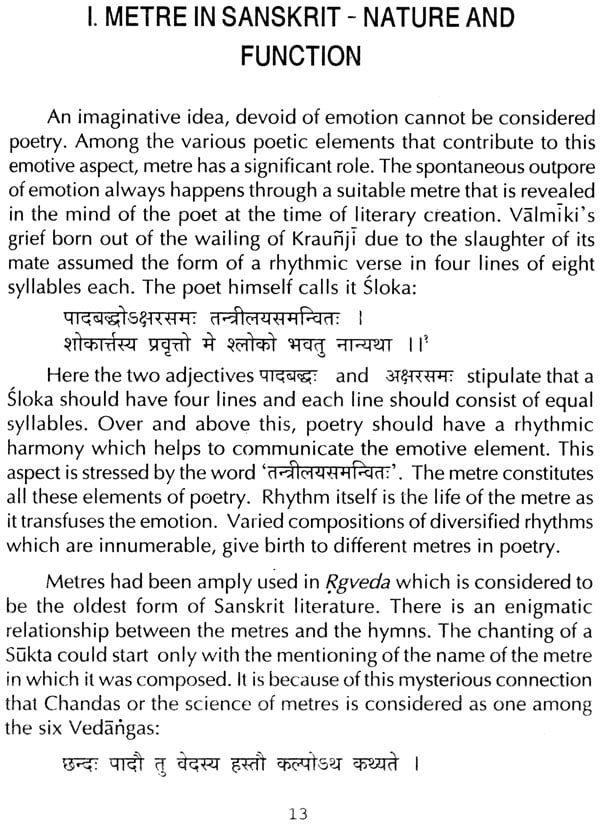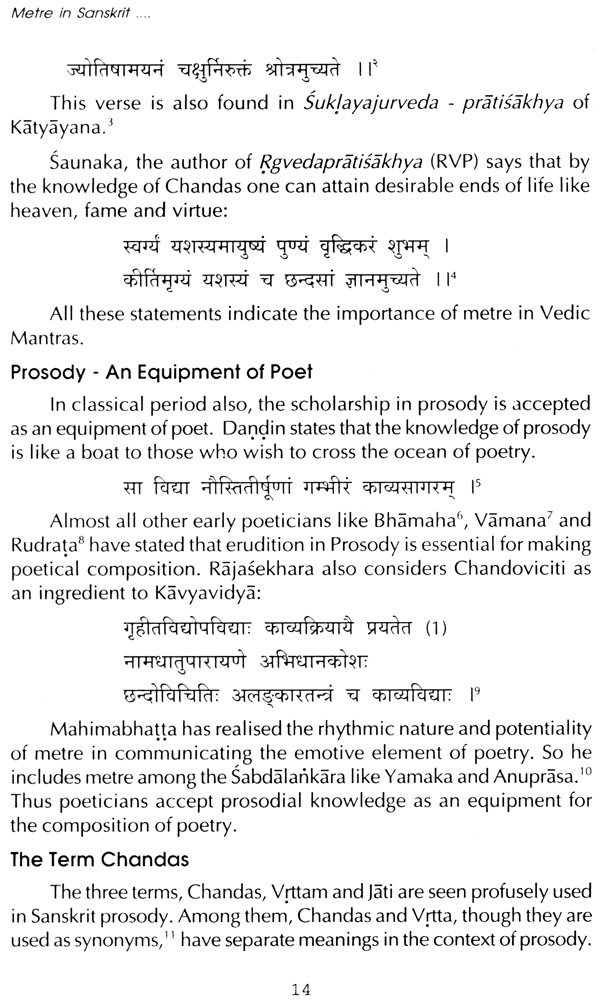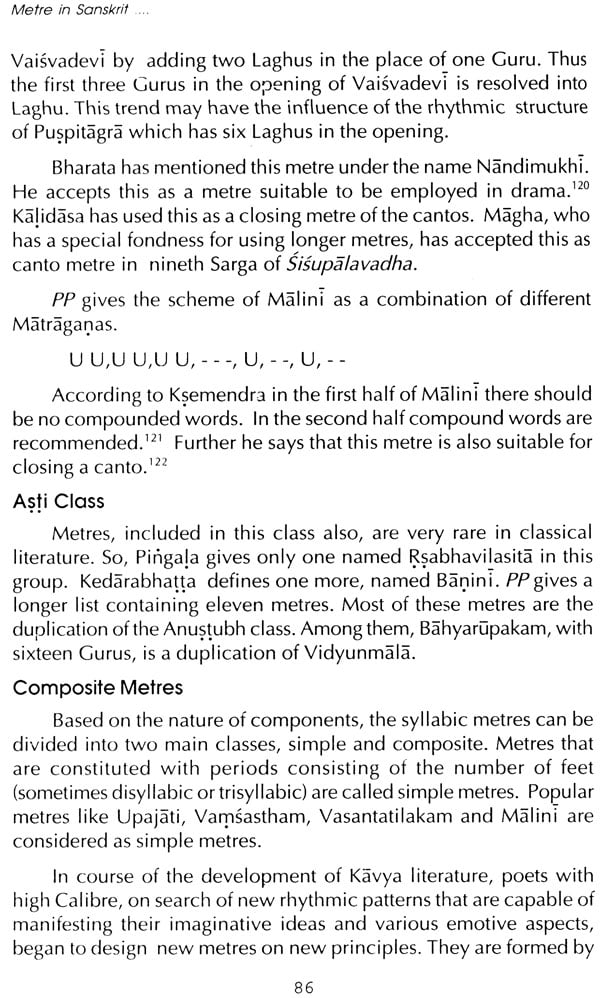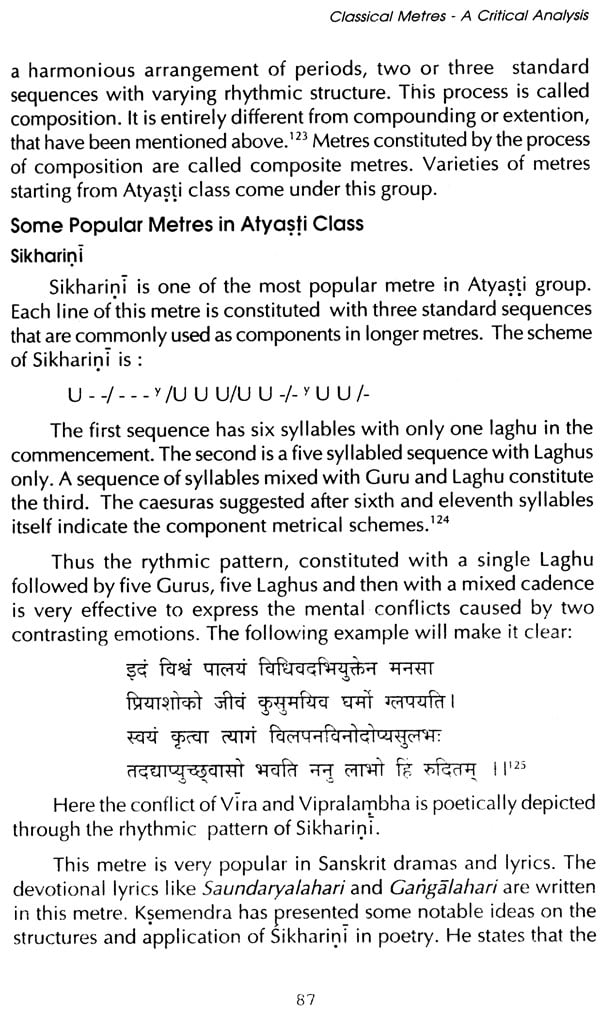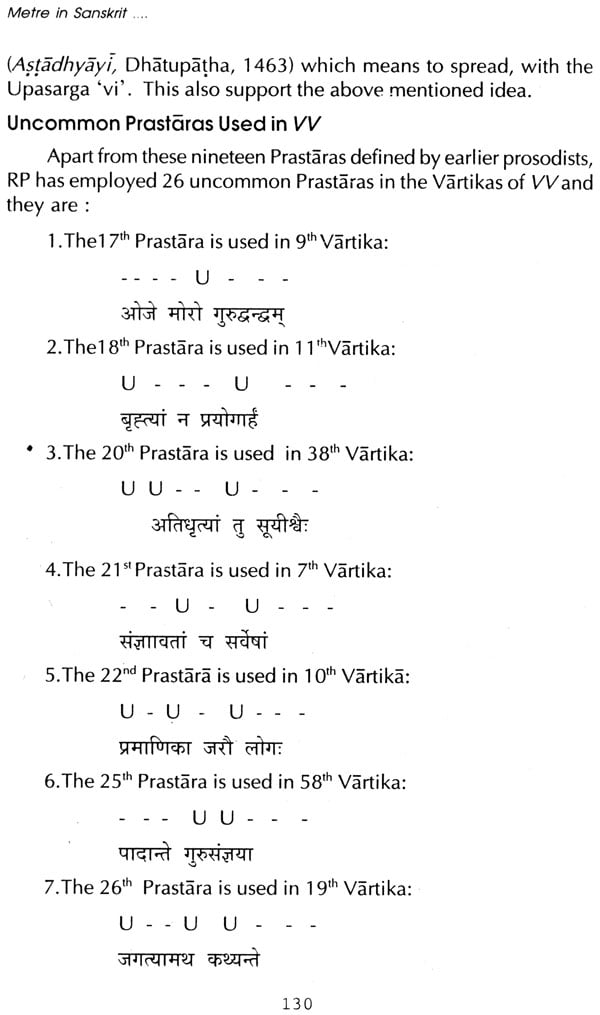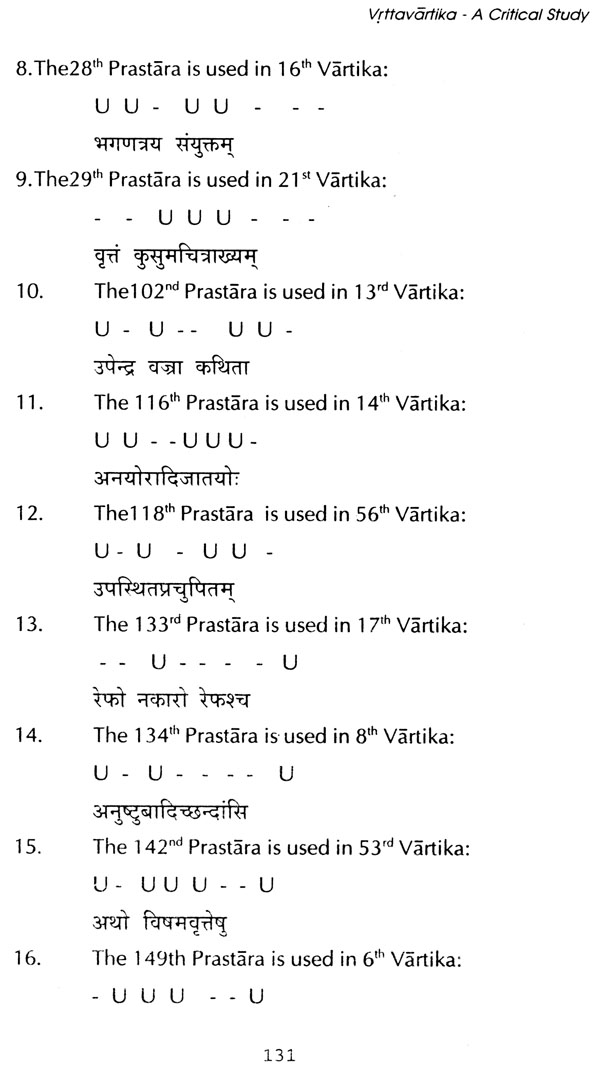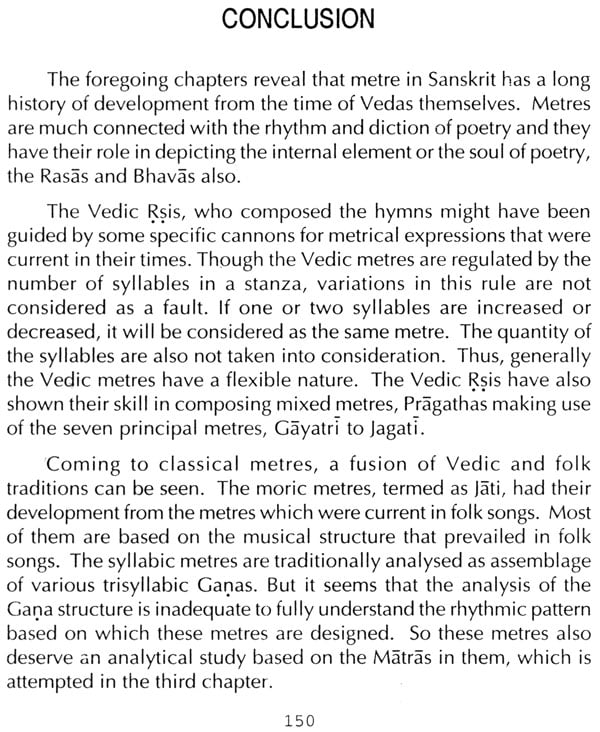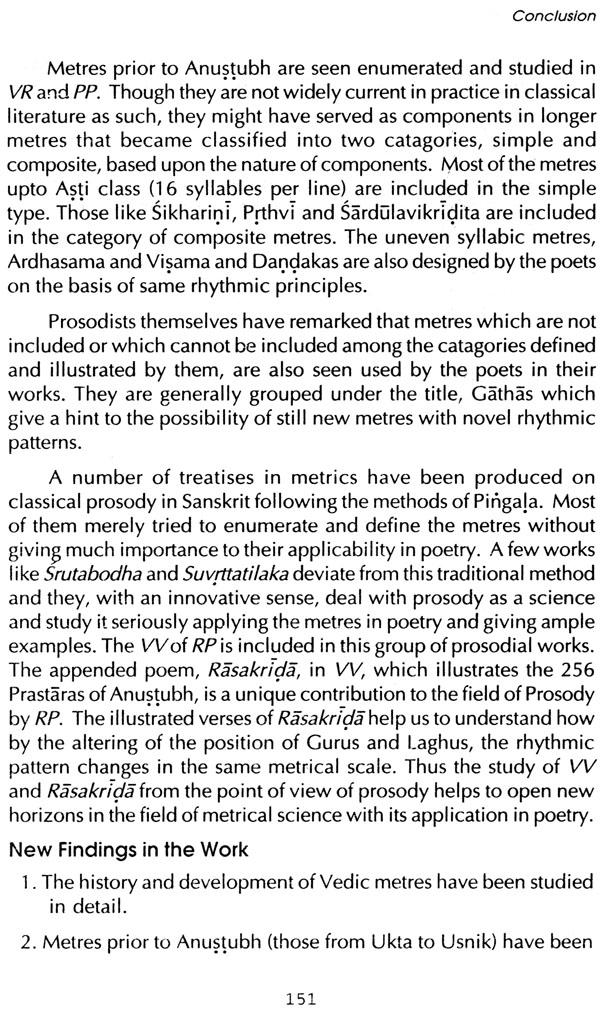
Metre in Sanskrit-A Study with Special Reference to Vrttavartika of Ramapanivada
Book Specification
| Item Code: | NAH348 |
| Author: | Dr. K.K. Geethakumary |
| Publisher: | Publication Division, University of Calicut |
| Language: | Sanskrit Text with English Translation |
| Edition: | 2008 |
| ISBN: | 9788177481228 |
| Pages: | 168 |
| Cover: | Paperback |
| Other Details | 8.5 inch x 5.5 inch |
| Weight | 160 gm |
Book Description
Foreword
I have great pleasure to introduce the present work Metre in Sanskrit -A Study With special Reference to Vrttavartika of Ramapanivada by Dr. K. K. Geethakumary to the world of scholars as the thirtieth book in the Calicut University Sanskrit series. This work substantially represents the Ph.D. thesis of Geethakumary who is currently working as Reader in the Department. The fact that she is one of the former students of our Department gives us a lot of satisfaction and sense of achievement.
The work, as the title suggests deals with the contribution made to Sanskrit prosody by Ramapanivada, one of the most prolific authors of Kerala through his Vrttavartik. The text is divided into two sections constituting prosodical principles and their illustration respectively. A technique profusely used by Ramapanivada is Prastara, which stands for the elucidation of the possible permutations and combinations within a structured metre. As the scholar informs us the author has designed the second part of the work as a poem entitled Rasakrida constituting the Prastaras of the metre. The present thesis touches upon all the aspects of the metre as exemplified by Ramapanivada.
I am sure that this work will be welcomed as an important addition to the literature on Sanskrit prosody.
Preface
In poetic compositions, rhythm and melody are mainly constituted by the metre employed in them. So metre is an integral part of poetic diction.
Metre has also much relationship with the sentiments that are delineated in poetry. Great poets like Kalidasa and Bhavabhuti have proved this in their works employing different metres for the depiction of various Rasas and Bhavas.
Metre in Sanskrit has a long history from the time of Vedas themselves. Most of the classical metres have developed from the Vedic metres. The folk tradition of India has also influenced much in the various stages of the development of the classical metres in Sanskrit.
Prosodists generally accept that the classical metres are the Prastaras (permutations) of various Vedic metres like Gayatri, Usnik, Brhati and Tristubh. Each metre is having a number of Prastaras among which only very few are accepted and used by poets generally. Thus Anustubh has 256 Prastaras all of which are illustrated by the scholar poet Ramapanivada in a short poem Rasakrida appended to his famous work on Prosody, Vrttavartika. This is a unique feature of Vrttavartika as a work on Prosody.
The present book is a study on the metre in Sanskrit with special reference to Vrttavartika of Ramapanivada studying in detail the rhythmic patterns of the Prastaras of Anustubh exemplified by the author in Rasakrida.
The present book is divided into five chapters. The first chapter deals with Metre in Sanskrit and its nature and function. Second chapter is a general study on Vedic metres. A critical analysis of classical metres is attempted in the third chapter and the fourth is devoted for the critical study on Vrttavartika.
The fifth chapter contains a few concluding remarks conclusion.
I have great pleasure in expressing my deep gratitude to my supervisor, Dr. K.P. Sreedevi, Reader, Department of Sanskrit Sahitya, Sree Sankaracharya University of Sanskrit, Kalady for her expert guidance and ready help at every stage in the preparation of this book.
I am very much obliged to Dr. C.M. Neelakandhan, Reader, Sree Sankaracharya University of Sanskrit, Kalady, Dr. N.V.P. Unithiri, Professor of Sanskrit, Dr. C. Rajendran, Professor and Head of the Department of Sanskrit, Dr. P. Narayanan Namboodiri, Reader, Department of Sanskrit, Calicut University, Or. Kunjunni Raja, Director, Adayar Library, and Research Centre, Madras, and Or. K. Maheswaran Nair, Reader Department of Sanskrit University of Kerala for the help and guidance they have given in finalising the book.
Thanks are also due to my teachers and friends not mentioned before, for the encouragement and help they have given throughout my research work.
Introduction
Ramapanivada is a prolific writer from Kerala, whose versatality of literary creation comprises of almost all branches of Sanskrit learning. He has written Mahakavyas, laghukavyas, different types of Rupakas as well as Sastra works in Vyakarana, Prosody, Dance and Music. Among them, Vrttavartika, a treatise on Prosody, with the short poem Rasakrlqla appended, is a rare work of importance in that field.
In this text the auther defines and illustrates only 72 metres that are being used commonly in classical Sanskrit. He excludes certain patterns like ‘Brhati’ stating that they are devoid of pleasing rhythm. In this respect this work corresponds to Suvrttatilaka of Ksemendra and Srutabodha, attributed to Kalidasa. Rasakrida, a small poem in four chapters, appended to Vrttavartika is another unique feature of this work. All the 256 Prastaras of Anustubh are illustrated in due order through this poem by the author.
In the present work Dr. K.K. Geethakumary tries to analyse all these specific features of Vrttavartika. She presents an indepth study of the metres in Sanskrit from Vedic to the classical period. Through this study she elucidates the fact that in syllabic metres also the basic principle underlying rhythm is the unit of Matras in them, not the unit of letters in ‘trio’ (gana). So in order to understand their aesthetic sensibility, the syllabic metres also should be analysed on the basis of Matraganas. Based on the poem Rasakrida she has also done a sincere attempt in the work to identify the rhythmic patterns of all the 256 prastaras of ‘Anustubh.’
It is hoped that the scholarly world will accept Dr. K.K. Geethakumary’s work with due enthusiasm and critical approach.
Contents
| Preface | 9 | |
| Introduction | 11 | |
| Abbreviations | 12 | |
| I. | Metre in Sanskrit - Nature and Function | 13 |
| II. | Vedic Metres - A General Study | 32 |
| III. | Classical Metres - A Critical Analysis | 52 |
| IV | Vrttavartika - A Critical Study | 109 |
| Conclusion | 150 | |
| Bibliography | 152 | |
| Index | 156 |
